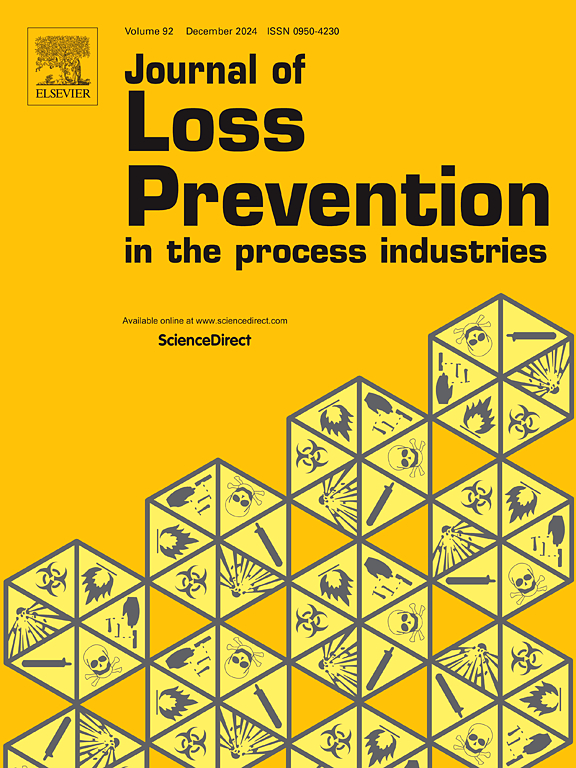Infrared and visible image fusion algorithm for fire scene environment perception
IF 3.6
3区 工程技术
Q2 ENGINEERING, CHEMICAL
Journal of Loss Prevention in The Process Industries
Pub Date : 2025-04-01
DOI:10.1016/j.jlp.2025.105647
引用次数: 0
Abstract
The fire scene environment is characterized by harsh factors such as high temperatures and dense smoke, which result in poor visual effects for single infrared and visible light images. Existing methods for the fusion of infrared and visible light images have been found to be less effective in “fire scene” environments, suffering from difficulties in capturing global information and insufficient extraction of cross-modal features. To address these issues, this paper proposes an algorithm for the fusion of infrared and visible light images that combines CNN (Convolutional Neural Network) with Mult-Head Transformer, effectively enhancing the quality of the fused images. The proposed fusion algorithm was experimentally validated on a self-compiled “fire scene” dataset against multiple comparative algorithms. Experimental results demonstrate that the proposed fusion algorithm has clear advantages over existing fusion methods in both subjective visual effects and objective evaluation metrics. Furthermore, ablation experiments were conducted to analyze the effectiveness of the proposed joint encoder and fusion strategy. Using the YOLOv8s recognition algorithm for target detection, the results of target detection in the fused images were compared with those in the original infrared and visible light images. The experimental outcomes confirm the effectiveness of the proposed fusion algorithm in the task of infrared-visible light image fusion, significantly improving target recognition in fire scene environments.
火灾现场环境感知的红外与可见光图像融合算法
火灾现场环境存在高温、浓烟等恶劣因素,导致单幅红外、可见光图像视觉效果较差。现有的红外和可见光图像融合方法在“火灾现场”环境下的效果较差,存在捕获全局信息困难和跨模态特征提取不足的问题。针对这些问题,本文提出了一种将CNN(卷积神经网络)与多头变换相结合的红外与可见光图像融合算法,有效地提高了融合图像的质量。在自编译的“火灾现场”数据集上与多种比较算法进行了实验验证。实验结果表明,本文提出的融合算法在主观视觉效果和客观评价指标上都比现有的融合方法有明显的优势。此外,通过烧蚀实验分析了所提出的联合编码器和融合策略的有效性。采用YOLOv8s识别算法进行目标检测,将融合图像中的目标检测结果与原始红外和可见光图像中的目标检测结果进行比较。实验结果验证了该融合算法在红外-可见光图像融合任务中的有效性,显著提高了火灾场景环境下的目标识别能力。
本文章由计算机程序翻译,如有差异,请以英文原文为准。
求助全文
约1分钟内获得全文
求助全文
来源期刊
CiteScore
7.20
自引率
14.30%
发文量
226
审稿时长
52 days
期刊介绍:
The broad scope of the journal is process safety. Process safety is defined as the prevention and mitigation of process-related injuries and damage arising from process incidents involving fire, explosion and toxic release. Such undesired events occur in the process industries during the use, storage, manufacture, handling, and transportation of highly hazardous chemicals.

 求助内容:
求助内容: 应助结果提醒方式:
应助结果提醒方式:


